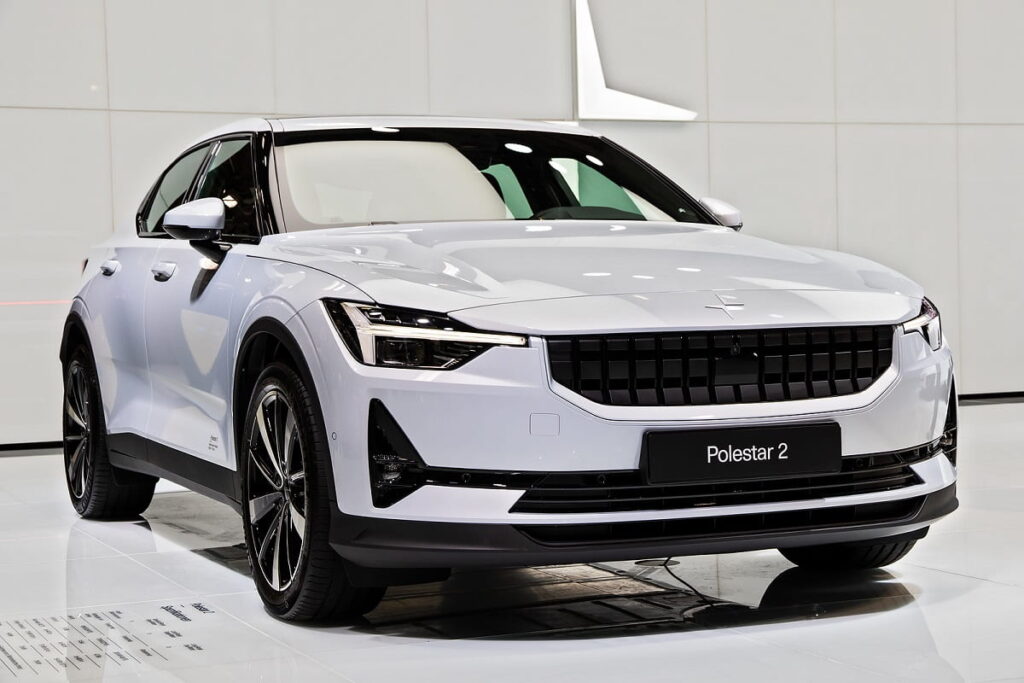Polestar Stock: A Pure-Play Electric Vehicle Company
Table of contents

At the beginning of the year, PitchBook released a report raving about the big returns investors enjoyed in 2020 from special purpose acquisition companies (SPACs) entering the electric vehicle and mobility market. In the latter half of last year, its Mobility SPAC Index generated a return of +77.7%, compared to the S&P 500 total return and Nasdaq 100 total return of +22.2% and +27.4%, respectively. Recent headlines from this year tell a different story. From CNBC: “Electric vehicle SPACs try to prove their worth to Wall Street as shares fall.” And Forbes: “When Electric Vehicles Meet SPACs, Stock Prices Plummet.” The CNBC SPAC Post Deal Index, which is comprised of the largest SPACs that have come to market and announced a target acquisition, has fallen by about -30% so far this year versus nearly a +20% gain for the Nasdaq.
While these numbers aren’t strictly apple to apple, we’re still talking about the same weedy, overgrown orchard. We warned Nanalyze premium readers about the pitfalls with electric vehicle stocks, especially EV SPACs, way back in July 2020 amid the initial bull run. That was also well before three SPAC-backed automotive companies – Nikola (NKLA), Lordstown Motors (RIDE), and Canoo (GOEV) – got slapped around by the SEC. The latter two are trading well below their pre-merger prices, and Nikola has dropped more than -25% since the beginning of the year.

Needless to say, we’ve remained largely bearish on SPACs in general and EV SPACs in particular. Even the upcoming Rivian EV IPO, which is driving the traditional route to the public markets, remains a risky investment given its complete lack of revenue and high-priced EV trucks that no avocado toast-eating Millennium would ever take off hard pavement. Despite all that, we were intrigued to find a pure-play electric vehicle company with real revenues rolling in that is in the midst of completing a SPAC merger. Let’s take a look at Polestar stock.
About Polestar Stock
Polestar isn’t your typical starry-eyed EV startup whose founders want to change the world, though it does stick to the ESG narrative on sustainability and climate change. The company actually jumped off the starting line as a Swedish racing team in 1996, eventually branding itself as Polestar Racing and engineering its own suped-up Volvos in the late 2000s. Volvo (VOLV-B.ST) eventually bought the company and brand in 2015. Volvo itself is a standalone subsidiary to Geely (0175.HK), a Chinese multinational automotive company. In theory, Polestar is an independent joint venture between Volvo and Geely, with its headquarters in Sweden but manufacturing based in China.
The SPAC behind the proposed merger is Gores Guggenheim Inc (GGPI), a blank check company backed by The Gores Group and Guggenheim Capital. The former is especially SPAC happy, having already taken seven other companies public through reverse mergers, including the iconic twinkies brand Hostess (TWNK). We’ve covered two other Gores groupies – Matterport (MTTR) and Luminar (LAZR). The former is digitizing real estate, while the latter is one of several LiDAR stocks that we’re avoiding. We actually liked Matterport and promised to take another look once the dust settles (and a quick peek shows that the company’s simple valuation ratio of 40 is right on the edge of our criteria). On the other hand, Luminar is way, way overpriced, despite the stock already diving more than 50% this year.

The proposed merger would value Polestar at $20 billion and add more than $1 billion to its ledger, including $800 million from Gores Guggenheim and another $250 million from Volvo, buddies of Geely Chairman Eric Li, and actor Leonardo DiCaprio (we assume that’s important to know for someone), among others. The company expects to deliver 29,000 vehicles of its flagship Polestar 2 EVs in 2021, up from about 10,000 last year. If the projections hold, Polestar would generate $1.6 billion in revenue this year. We don’t know how ambitious that number is because Polestar provides no historical revenue information at all – only “2021E.” Why is this critically important information not included?
Investors should pay close attention here. We’re now 80% through the year. That means Polestar should have no problems hitting the $1.6 billion revenue estimate which they offered up with plenty of knowledge as to how their year is progressing. If they don’t, that’s a big red flag.
Polestar Electric Vehicles
Presumably most of the promised money is coming from sales of Polestar 2, the company’s first fully electric vehicle, which retails starting at just under $40,000 (with federal tax credits), though you always end up paying more for the bells and whistles. The long-range single motor can cover 265 miles on a single charge, while the dual-motor option brings more than 400 horsepower to the road and can hit 60 mph in just 4.5 seconds with just a little less range. Apple lovers may hate the fact that the Polestar 2 uses Google’s new Android Automotive OS infotainment system. The reviews by the usual automotive experts have been positive and sometimes glowing – “One of the most complete electric cars money can buy.” – so it appears that Polestar is putting out a quality product.

The company’s next EV will actually be an SUV manufactured in the United States, which Polestar is obviously targeting among its 14 active markets across three continents. Of course, the company is also integrating self-driving features into all of its vehicles, working with Luminar, Waymo, and Nvidia (NVDA), among others, to develop the technology. For ESG types, the company uses blockchain to track raw materials in its supply chain like lithium that may be destroying the environment or enslaving children.
Polestar Versus Tesla
The Polestar 2 is obviously a direct competitor to the Tesla Model 3. In fact, the comparisons to Tesla (TSLA) are inevitable, especially since Polestar is one of the very few pure-play electric vehicle companies with revenues. (We’re only assuming they have revenues because we’ve been given nothing but estimates so far.) Like Tesla, Polestar uses a direct-to-consumer model, with 20 retail locations in the United States alone, with plans to have 35 locations by the end of 2022.
It’s worth noting that it took Tesla the better part of a decade to deliver its first cars built entirely by the company, because before 2012 manufacturing of the Tesla Roadsters was largely outsourced to Lotus Cars. Founded in 2003, Tesla broke 31,000 deliveries by 2014 – about the same number of cars that Polestar expects to put on roads this year. Polestar claims it will deliver 290,000 cars by 2025, which would only put it slightly ahead of Tesla’s four-year production when it delivered about 245,000 vehicles by 2018.

In other words, Polestar’s manufacturing projections aren’t necessarily hyperbole, considering it has two large automakers on its team rather than just one megalomaniac billionaire from South Africa. By that measure, the company’s boast that it will rake in $17.8 billion in revenue by 2025 doesn’t seem quite as unbelievable when you compare it to Tesla, which went from $3.2 billion in 2014 to nearly $21.5 billion in revenue by 2018.
Should You Buy Polestar Stock?
Of course, these are just still a bunch of numbers from the (very lame) Polestar investor deck, and estimated revenues aren’t actual revenues. We don’t know the calculus and the calculations behind these rosy predictions. What does the company’s supply chain look like? How will it deal with the ongoing chip shortage and the impending lithium battery storage? How does its Boy Scout pledge to be sustainable and transparent going to affect the bottom line? We can’t answer these and a hundred other questions until we can look under the hood and kick the tires of the SEC documents that Polestar must file after the merger is completed, which isn’t expected until the first half of 2022. We wouldn’t consider touching it until then.
And even after that, we would want to wait and see how well this company can execute against the competition. Tesla isn’t the only company building EVs. Just about every major automobile manufacturer is cranking out electric vehicles. In 2020, there were about 370 EV models globally, up 40%
year-over-year, reported CB Insights. More than 100 new EVs are set to debut by 2024, according to Consumer Reports. Volkswagen has committed to going all electric in Europe within the next decade, for example.

And then there’s Nio (NIO), a pure-play electric vehicle company out of China that went public back in 2018. We weren’t exactly bullish about the company at the time, but Nio has managed to build itself into a company worth more than $60 billion, reporting more than $1.3 billion in revenue on delivering nearly 22,000 EVs in the second quarter of this year. That gives us a valuation ratio of just 11.5, though profitability continues to elude the company. (Of course, it took Tesla 18 years to turn a profit, largely thanks to carbon credits, and immediately joined the hallowed ranks of the S&P 500). Regardless of how successful Nio becomes, we won’t invest in any Chinese stock that uses an opaque VIE structure.
Conclusion
Polestar still has a lot to prove, but we’re starting to see signs that not all EV stocks are investing sinkholes. After all, the long-term total addressable market for EVs will eventually be a trillion-dollar industry. We just can’t see putting money into a company with little history and tons of competition, especially out of China, without better insights into the full financial picture.

And if we needed another reason to avoid putting money into a SPAC stock until well after the ringing of the opening bell: News broke last week that vertical farming startup AeroFarms has pulled out of its merger with Spring Valley Acquisition Corp. (SV). The SPAC joy ride may finally be coming to a close. Let’s hope Polestar has a smoother road ahead. If the deal goes through next year, Polestar will trade under the ticker PSNY.
Sign up to our newsletter to get more of our great research delivered straight to your inbox!
Nanalyze Weekly includes useful insights written by our team of underpaid MBAs, research on new disruptive technology stocks flying under the radar, and summaries of our recent research. Always 100% free.















The company delivered ~29,000 vehicles last year and it expects to deliver 50,000 units this year.
Share price: $11.11, market cap: $1.1B.
We’ll look to do a piece on them now that the SPAC merger has completed. Just noticed they have some serious quality problems – worst in class according to one ranking by J.D. Power.